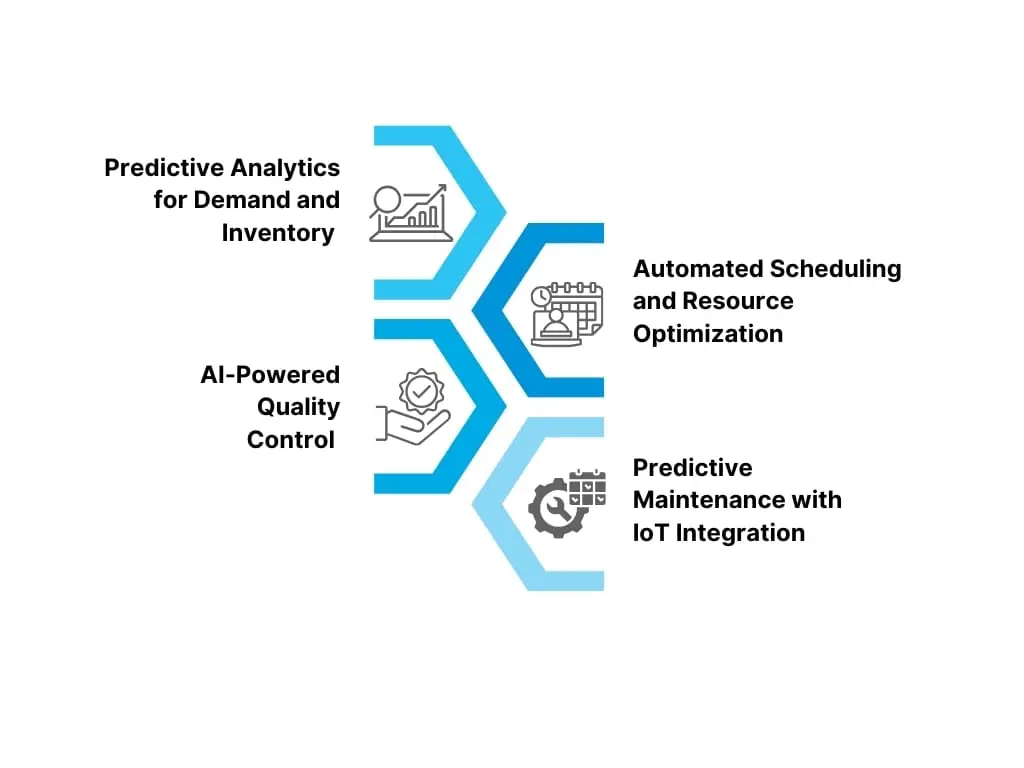Leveraging AI in Upholstery ERP Systems
We all are familiar with the rise of AI and Machine Learning over the past decade and how it has impacted all the various industries across the globe. The same stays true with the rise of AI in the upholstery industry. The global upholstery industry is rapidly evolving, driven by customer demand for personalization, faster delivery, and higher quality. To keep pace, upholstery manufacturers are turning to new technology—specifically, AI integrated ERP system.
The Evolution of ERP in Upholstery
Traditional ERP systems have helped upholstery manufacturers track materials, manage finances, and control production. However, as complexity grows, these systems must move beyond static data management. The integration of AI now enables ERP systems to learn from data, anticipate trends, automate tasks, and make smarter decisions—transforming the role of ERP from a passive data handler to an active business advisor.
Key AI Applications in Upholstery ERP

Predictive Analytics for Demand and Inventory
Automated Scheduling and Resource Optimization
Manual scheduling is often inefficient and prone to errors. AI upholstery manufacturing ERP software can dynamically adjust production schedules based on material availability, workforce capacity, and order priority. The result? Improved machine utilization, shorter lead times, and fewer production bottlenecks.
Quality Control
Upholstery is all about attention to detail. AI-driven ERP systems can detect quality issues through image recognition and sensor data. Whether it’s a stitching error or fabric inconsistency, the system flags defects in real time, reducing waste and rework.
Predictive Maintenance with IoT Integration
Machines are essential to upholstery production, and unexpected downtime can be costly. AI upholstery ERP software with IoT sensors can monitor equipment health and predict maintenance needs before breakdowns occur. This ensures continuous production and extends machine life.
Customer-Centric Innovations
- Virtual Reality (VR) Visualization Tools: AI-enabled VR tools allow customers to visualize custom furniture pieces in a virtual setting. This enhances the buying experience and reduces the likelihood of returns or dissatisfaction. Integrated into the ERP, these tools also inform production and inventory decisions based on real-time customer preferences.
- Personalized Recommendations via AI: AI algorithms analyze customer behavior, past purchases, and design preferences to recommend personalized furniture styles, fabrics, and colors. Upholstery manufacturers can use this data not only to boost sales but also to align production with actual demand.

Upholstery Supply Chain Optimization
with AI
Managing upholstery supply chains can be incredibly complex, involving multiple suppliers, custom materials, fluctuating demand, and tight delivery schedules.
Today, AI upholstery manufacturing ERP systems are helping manufacturers transform their supply chains from reactive to proactive, minimizing delays and maximizing efficiency. Here’s how:
Smart Logistics and Route Optimization
With AI-driven logistics optimization, ERP systems analyze real-time traffic patterns, weather forecasts, carrier performance data, and historical delivery trends to find the fastest and most cost-effective delivery routes.
Instead of relying on static delivery plans that don’t account for sudden disruptions like traffic jams or road closures, AI upholstery tools dynamically reroute shipments to minimize delays. This leads to:
- Reduced shipping costs by optimizing fuel consumption and cutting unnecessary transit times.
- Higher delivery rates on time, improving customer satisfaction and strengthening business relationships.
- Better fleet utilization, allowing logistics teams to do more with fewer resources.
- Faster response to disruptions, such as late supplier shipments or last-minute order changes.
Smart logistics also enables manufacturers to predict and avoid bottlenecks during peak seasons, ensuring that upholstery products reach retailers or customers exactly when needed.
IoT-Enabled Adaptive Inventory
Traditional inventory management methods, which often rely on manual counts and static reorder points, are no longer enough.
With AI upholstery inventory systems integrated with IoT (Internet of Things) devices across warehouses and production facilities, manufacturers gain real-time tracking of raw materials, components, and finished goods. Smart sensors monitor inventory levels, temperature-sensitive materials, and usage rates of critical supplies.
AI algorithms then analyze this live data to:
- Automatically adjust reorder points based on current usage rates and forecasted demand rather than sticking to fixed thresholds.
- Predict supply chain disruptions, such as supplier delays or sudden spikes in demand, and alert managers instantly.
- Enable adaptive inventory planning, ensuring manufacturers can maintain a lean inventory while still meeting order commitments.
- Enhance material traceability, which is critical for quality assurance and meeting regulatory requirements.
By applying AI upholstery innovations to inventory and logistics, manufacturers avoid stockouts that can halt production and minimize excess inventory that ties up capital and warehouse space.
Future of AI in Upholstery ERP
Emerging Trends: Generative AI and Blockchain
Generative AI is making its way into design and prototyping, allowing AI to create new upholstery designs based on customer feedback and market trends. Meanwhile, blockchain integration in ERP systems could offer traceability and transparency in sourcing materials—especially important for sustainability-conscious customers.
Challenges and Considerations
Despite its promise, AI implementation isn’t without hurdles. It requires quality data, skilled personnel, and a shift in company culture. Manufacturers must also consider ethical AI use, data privacy, and system integration challenges.
AI and Machine Learning in ERP systems are reshaping the upholstery industry by making the systems smarter, faster, and more customer centric. From predicting demand and improving quality control to optimizing logistics and personalizing customer experiences, AI upholstery ERP software is a strategic asset. As technology continues to evolve, upholstery manufacturers that embrace intelligent ERP systems will be better positioned to lead in a highly competitive, ever-changing market.

